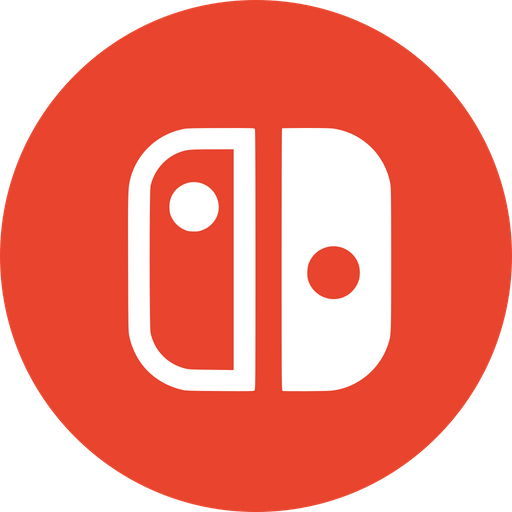

I really want PostmarketOS to succeed, even to be good enough as a secondary device. The long term support and software flexibility seems so promising, but it is still nowhere near ready for most people.
welp guess I’m John Fireemblemshitposting now


I really want PostmarketOS to succeed, even to be good enough as a secondary device. The long term support and software flexibility seems so promising, but it is still nowhere near ready for most people.
Is the plan to recover the rest of the data? Just wondering if I should reupload some of my older posts’ images.
Thank you for your work keeping the instance going and being open about this sort of stuff.



I am so ready (when I find time to play it, damn the 3DS games are so tempting after I finally fully complete 3H)
How’s the build quality? Does it feel more like a budget or premium phone?


I’m glad Chibi Robo is finally getting a chance to shine on a more popular console. After the original game, the franchise was run into the ground so hard, so to even have this playable on a modern Nintendo system is quite exciting. Maybe if it’s popular enough on NSO we might get a full revival? Unlikely, but you never know.


I don’t know why Nintendo feel the need to get so overly protective over displays of their games (streaming, competitions, so on). There’s been so many games I have bought because I saw someone play it on a stream or something and thought it was neat. What are they even losing out on? They are just shooting themselves in the foot here.


This does make me wonder how much Nintendo are subsidising US bound Switch 2s, considering the price on that hasn’t increased since launch (yet). Maybe they think it’s worth it to take a hit on it and try and make it up with higher priced software?


The interest in it probably evaporated the second that people found out it was 480p. If it was 1080p like the Nintendo one people would definitely buy it more.


Wasn’t Gaben’s point in that statement that although piracy inevitably happens to some degree, the best way to mostly prevent it is to make a good service? That’s why Steam was such a success, as it made digitally licensed games easily accessible to PC gamers who were previously being screwed over by other platforms.


It is a KDE thing, but Fedora is the distro on which it works best. On a lot of other distros it often runs into problems.


I think Nintendo would be able to manage getting a good price per gig on 32GB and 16GB cartridges. They have massive demand (a vast amount of Switch 2 games are under 16GB) as well as close historical relationships with flash manufacturers. In addition, I wouldn’t be surprised if those sizes were still mass produced at low prices for embedded or industrial computing use, even as consumers move to larger storage media making consumer SD cards at those sizes more expensive per gig.


I’ve tried quite a few distros (openSUSE, Ubuntu, Solus, Arch, so on) and none seem to offer this feature. It’s a shame, as it’s quite useful to have since updating a live system can sometimes cause some trouble. Even just the updating from Discover can be broken on some systems (I know openSUSE at the very least acts a bit funny when it comes to PackageKit, I think Arch as well).


Can definitely recommend Fedora too. Software updates are at a good pace, and the system has a lot of polish all around. For example, all you need to do for updates is to press “update” in Discover and it’ll do everything for you, applying on reboot for stability. Most things “just work”.


Nintendo needs to get to work making smaller cartridges for Switch 2, 64GB carts only is too expensive for a lot of publishers. I do think key cards have a purpose for 64GB+ big games that would be very expensive physically without the key card system, but smaller games should have the whole game on the cartridge. At the very least Nintendo needs to ban code in a box and make those publishers move over to key cards.


Hopefully they can manage to stem the flow on the eShop. The shovelware problem is worse than it was on the Wii. However, I have noticed recently on my Switch 2 (also maybe on Switch 1 eShop as well now?) that a lot of those sorts of games aren’t flooding the front page all the time, which is a good sign. They probably changed some of the algorithms, as I think they were tuned to show newest releases first.


In my experience, even when new my 3DS XL died way faster in sleep mode compared to the Switch. I’ve had a Switch in a bag for nearly two days on sleep with some light gameplay and still have at least 50% of its battery. Meanwhile, the 3DS XL battery went down quick enough one of my first purchases was one of those USB charger cables so I could charge it anywhere. It lasts under a day on sleep with some light gameplay.


What sort of AAs were you using? I used to get around at least a month or two on a set of fully charged standard Eneloop AAs. Then again, I didn’t use my Xbox too intensely, maybe you had a different experience. It would make sense for the Elite to have longer battery life simply because of better battery chemistry (lithium ion on the integrated pack compared to AAs with nickel metal hydride).


It is extremely unlikely that Steam are accepting of piracy. They may be negligent (maybe not investing enough into copy protection), but being even somewhat accepting would immediately tarnish their reputation with game publishers. Denuvo seems like more of a quick fix, not a real solution, that was put on after publishers started to lose patience. Even for their own self interest, they would be losing money on their own published games.


You have a good point. As long as that fear is in the used games market, people will be incentivised to only buy new cartridges (if not digital) as they can’t trust any used ones. The only sales then would be between people who know each other and are swapping their games, which is a far smaller market. It is somewhat ironic that the MIG Switch, a device made by people who have nothing to do with Nintendo, might end up helping Nintendo revenues by making it so that nobody can trust that used games weren’t cloned.
There’s still a surprising amount of devices made by HMD (who own Nokia’s consumer phone brand, so you’ll sometimes see them as Nokias) that run Series 30+ (think old Nokia software with some very slight modern enhancements) but have 4G hardware to play ball on modern networks.